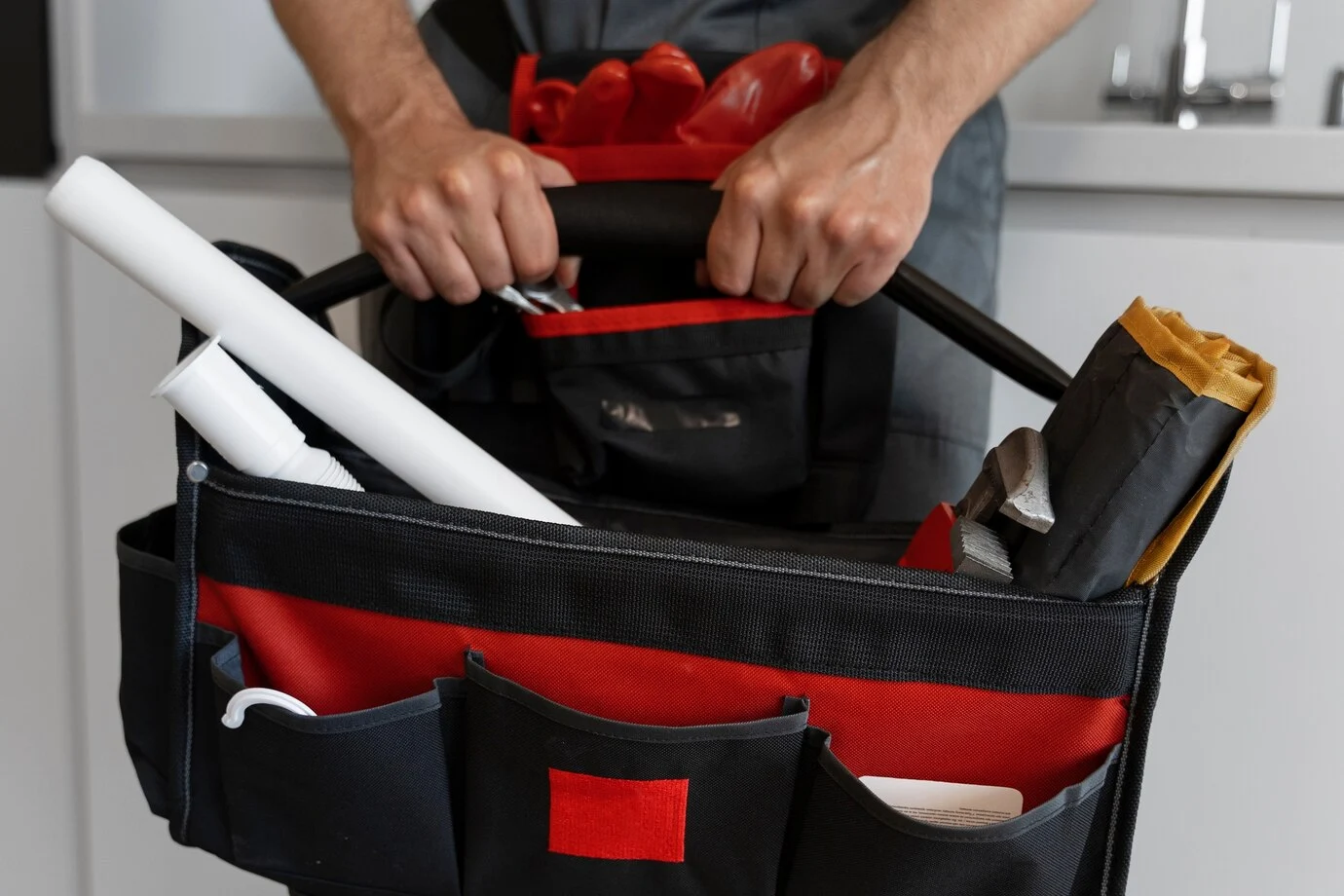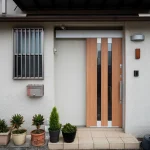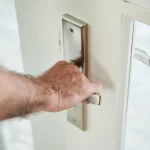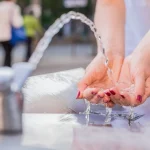As a homeowner, there’s nothing quite as empowering as having the confidence and tools to tackle basic plumbing issues. Not only does it save money, but it also gives you the peace of mind that you can handle minor emergencies without waiting for professional help. Whether it’s fixing a leaky faucet, unclogging a drain, or replacing a worn-out gasket, having a well-equipped DIY plumbing toolkit is essential. In this guide, we’ll explore the must-have tools for every homeowner, share expert insights, and sprinkle in a few make the journey more relatable.
Why a DIY Plumbing Toolkit is Essential
Imagine it’s a Sunday evening, and you discover a small leak under your kitchen sink. The plumber is not available until the next day, and the leak is slowly turning into a mini flood. This scenario happened to me a few months ago. Luckily, I had a basic plumbing toolkit and could temporarily fix the leak until professional help arrived. This experience reinforced my belief in the importance of being prepared with the right tools and knowledge.
Expert Insight: Empowerment Through Knowledge
“Having a basic understanding of plumbing and the right tools can empower you to tackle small repairs yourself, saving time and money.” – Monica Moody, Home Improvement Blogger
Must-Have Tools for Your DIY Plumbing Toolkit
1. Adjustable Wrench
An adjustable wrench is versatile and can fit various sizes of nuts and bolts. It’s particularly useful for tightening and loosening plumbing fittings.
2. Pipe Wrench
A pipe wrench provides a firm grip on pipes and is essential for turning and holding pipes. It comes in different sizes, so having a couple of different sizes in your toolkit is advisable.
3. Plunger
A plunger is a must-have for clearing clogs in sinks, toilets, and drains. It’s a simple tool, but incredibly effective in most minor clog situations.
4. Plumber’s Tape (Teflon Tape)
Plumber’s tape is used to seal pipe threads to prevent leaks. It’s easy to use and essential for ensuring a watertight seal on threaded pipe connections.
5. Pipe Cutter
A pipe cutter is necessary for cutting copper or plastic pipes. It provides a clean cut, which is important for ensuring a proper fit when making new connections.
6. Plumber’s Putty
Plumber’s putty is a malleable substance used to create watertight seals around faucets and drains. It’s particularly useful for sealing leaks around fixtures.
7. Basin Wrench
A basin wrench is designed for working in tight spaces, such as under sinks. It’s particularly useful for removing and installing faucet fittings.
8. Pliers
Pliers, especially tongue-and-groove pliers, are versatile tools for gripping, turning, and twisting pipes and fittings. They are essential for tasks that require a strong grip.
9. Auger (Plumber’s Snake)
An auger is used for clearing deeper clogs in pipes and drains that a plunger can’t handle. It’s an invaluable tool for more serious clogs.
10. Hacksaw
A hacksaw is used for cutting through metal and plastic pipes. Ensure you have extra blades, as they can wear out quickly.
11. Bucket and Towels
Always have a bucket and some old towels on hand to catch water and clean up spills during repairs. This can prevent water damage to your home.
Safety First
Expert Insight: Safety First
“Before attempting any DIY plumbing, prioritize safety. Invest in quality tools and familiarize yourself with proper procedures to avoid causing bigger problems.” – Mike Holmes, Contractor & TV Personality
When working on plumbing projects, safety should always be your top priority. Here are some safety tips to keep in mind:
- Turn Off Water Supply: Always turn off the water supply before starting any plumbing repair to avoid flooding.
- Wear Protective Gear: Use gloves to protect your hands and safety glasses to shield your eyes from debris.
- Use Proper Tools: Using the right tool for the job prevents accidents and ensures a proper fix.
- Know When to Call a Professional: If a job seems too complex or you’re unsure, it’s always best to call a professional plumber.
Personal Anecdote: The Time I Fixed a Leaky Faucet
I remember the first time I attempted to fix a leaky faucet. I was nervous but determined. Armed with my adjustable wrench and plumber’s tape, I managed to replace the worn-out washer causing the leak. The sense of accomplishment I felt afterward was incredible. That small victory motivated me to learn more about DIY plumbing and expand my toolkit.
Quality Over Quantity
Expert Insight: Quality Over Quantity
“Don’t overwhelm yourself with a massive toolbox. Focus on acquiring high-quality essential tools that will last and tackle most common plumbing issues.” – Sarah Beeny, Property Developer & TV Presenter
When building your DIY plumbing toolkit, it’s important to invest in high-quality tools that will last. While it might be tempting to buy cheaper tools to save money, quality tools are more durable and can handle the wear and tear of regular use.
Preventative Maintenance is Key
Expert Insight: Preventative Maintenance is Key
“A well-equipped DIY plumbing toolkit allows you to perform routine maintenance tasks like tightening loose connections or replacing worn-out gaskets, preventing future leaks and headaches.” – Nicole Fusco, Home Improvement Blogger
Regular maintenance can prevent many common plumbing issues.
Here are some routine tasks you can perform with your toolkit:
- Check for Leaks: Regularly inspect pipes and connections for signs of leaks and tighten as necessary.
- Clean Drains: Prevent clogs by cleaning drains regularly. Use your auger or plunger to keep them clear.
- Replace Worn-Out Parts: Over time, washers, gaskets, and seals can wear out. Replace them before they cause leaks.
Learning and Growing
Expert Insight: Learning is a Journey
“Don’t be discouraged if a repair doesn’t go perfectly. Use online resources, consult with professionals at your local hardware store, and keep practicing to improve your DIY plumbing skills.” – The Spruce, Home Improvement Website
Learning DIY plumbing is a journey. With each project, you’ll gain more confidence and skill. Don’t be afraid to make mistakes; they’re part of the learning process. There are plenty of resources available online, including tutorials, videos, and forums where you can ask questions and get advice.
The Importance of a Well-Equipped Toolkit
Having a well-equipped DIY plumbing toolkit is not just about fixing problems as they arise. It’s also about feeling prepared and confident in your ability to maintain your home. The peace of mind that comes with knowing you can handle minor plumbing issues is invaluable.
Expert Insight: Plumbing is a Team Effort
“For complex repairs or jobs requiring specialized tools, don’t hesitate to call a professional plumber. Sometimes, DIY can lead to bigger problems.” – Scott McGillivray, Contractor & TV Personality
Remember, while having a DIY plumbing toolkit is essential, there are times when it’s best to call in the professionals. Complex repairs or issues involving gas lines or major plumbing installations should be handled by experts to avoid causing more significant problems.
Conclusion
Building your ultimate DIY plumbing toolkit is an investment in your home and your confidence as a homeowner. With the right tools and a bit of knowledge, you can tackle common plumbing issues, save money on repairs, and prevent future problems. Remember to prioritize safety, invest in quality tools, and don’t hesitate to seek professional help when needed. Happy plumbing!
Studies on DIY Plumbing and Homeowner Maintenance
- The Impact of DIY Knowledge on Homeownership Costs: This study by the National Bureau of Economic Research explores how homeowner knowledge of basic repairs, including plumbing, can lead to significant cost savings over time.
- The Rise of Online DIY Resources and Home Improvement Projects: This report by Statista highlights the increasing popularity of online DIY tutorials and resources, empowering homeowners to tackle plumbing projects.
- The Link Between DIY Skills and Homeowner Satisfaction: This research explores the correlation between a homeowner’s DIY skillset and their satisfaction with their living space and overall homeownership experience.
Building your DIY plumbing toolkit is a journey of learning and empowerment. With the right tools and knowledge, you can tackle common plumbing issues and feel more confident in your home maintenance skills.










